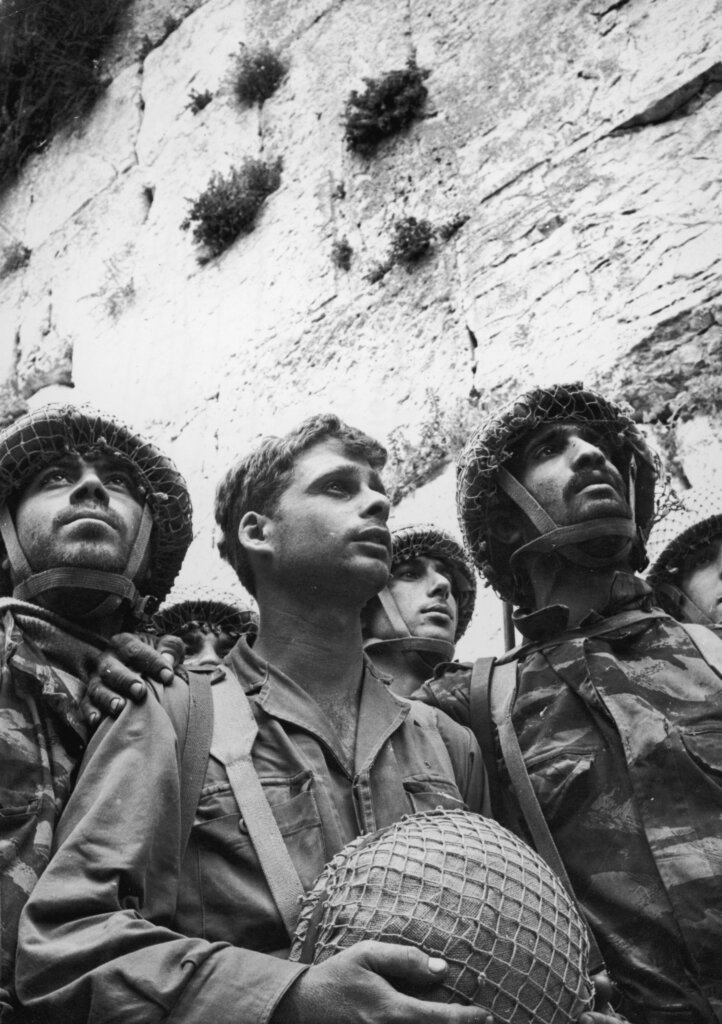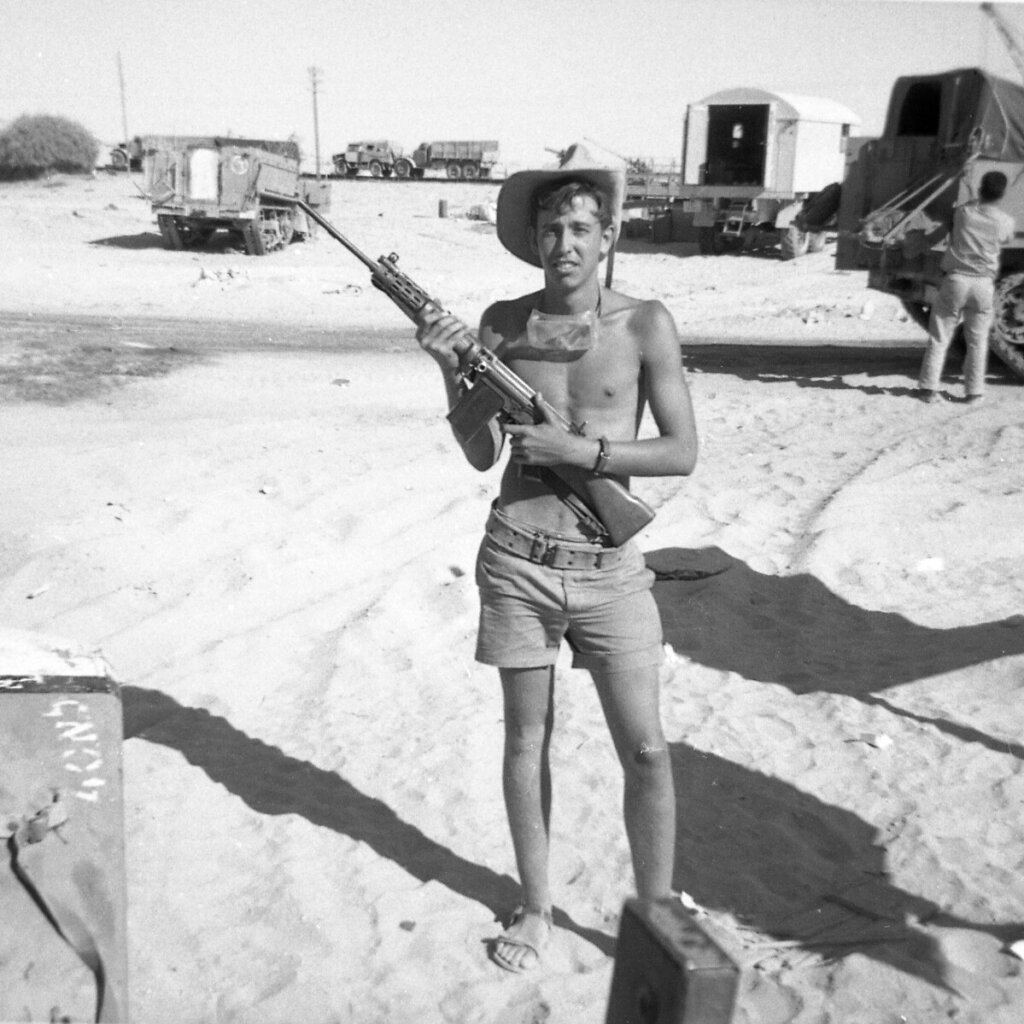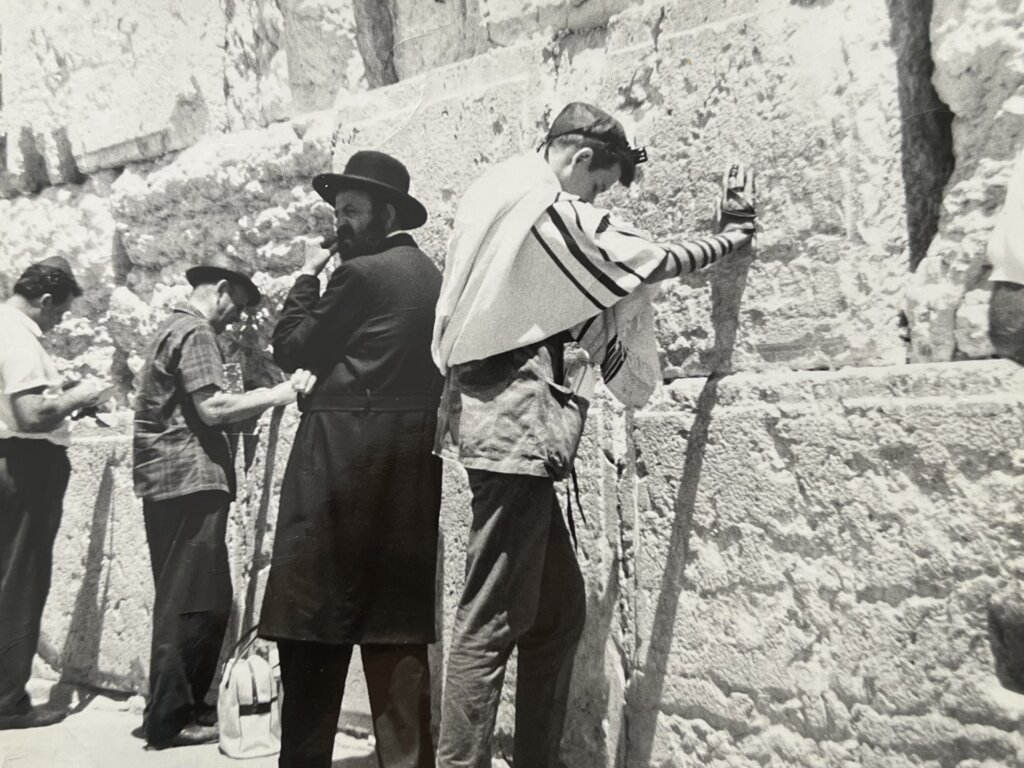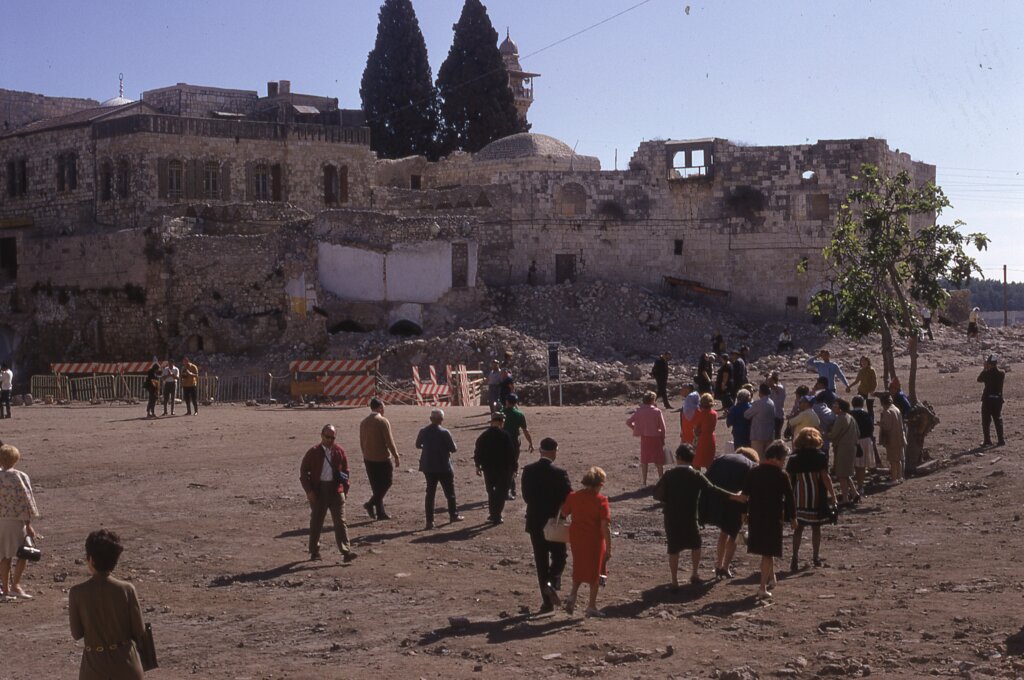No one dreamed of a mechitzah: At the newly liberated Western Wall, we all prayed as one
On Tisha B’av 1967, those gathered in Jerusalem were too grateful to be focused on senseless divisions

At the end of the Six Day War, Israeli soldiers hug and kiss the stones of the Western Wall. Photo by Dan Porges/Getty Images
A few days before the fast day of Tisha B’Av, on Aug. 15, 1967, I found myself standing in the sunshine in front of the Western Wall.
I wasn’t exactly sure what brought me there, but before I knew it, a Haredi man had put tefillin on my arm and forehead and had me repeating prayers as I touched the ancient stones. Raised in a Conservative, suburban South Jersey home, it was surreal, unlike any experience of Judaism I had — or could imagine.

Weeks earlier, from the Duke University campus where I was a 20-year-old student, I was glued to the TV in the dormitory commons room as the Six-Day War unfolded. In particular, on June 7, when Israel Defense Force paratroopers stormed the Temple Mount, rushing to the wall in tears, singing and praying as the bullets were still flying. Photographer David Rubinger captured the moment in his famous shot of three paratroopers standing at the wall.
Knowing something of Jewish history, I realized what a momentous event that was. For the first time in nearly 2,000 years, Jews were able to access the remnants of our Temple, the holiest site in Judaism. I knew that I had to get to Israel as soon as I could.
By July, I was at an abandoned United Nations peacekeeping base in El Arish, in Sinai, on the Mediterranean Sea, where I was a civilian volunteer attached to the IDF. With other young Jews from around the world, we brought abandoned and captured Egyptian tanks, trucks and artillery for shipment back to Israel. I was fitter than I had ever been, tanned nut-brown, and feeling more fulfilled by the work I was doing and the people I was doing it with than ever before.

As Tisha B’Av approached, the same pull that drew me to Israel beckoned me to the Kotel. I hitchhiked to Jerusalem while on leave, staying with an Israeli guide named Dov Singer, whom my parents had met on an earlier tour. He and his wife were secular, like many Israelis, and were amused but encouraging when I said I wanted to go to the Western Wall for the holiday. I told them that I was feeling the pull of Jewish history.
Near dusk, I set off on foot alone, dressed in my fatigues, to the Old City. The closer I got, the thicker the crowds. The mood seemed jubilant, if not festive – I don’t recall any security. From a distance, the vast, then-unobstructed dirt plaza appeared to be a vast sea of people, with small circles sitting on the ground, with candles, reading from the Book of Lamentations, as tradition dictated.
There was no mechitzah separating men and women.
Some of the circles were grouped by gender while others — including ones composed of IDF soldiers — were mixed. There were Haredi circles, but some Orthodox Jews also had joined the mixed groups. My Hebrew was still rudimentary, so the ancient verses meant little to me. I drifted from circle to circle, marveling at the variety of Jews who had come to the dusty square to touch history.
Here were the Jewish people assembled, without thought of sect or denomination, religious or secular. There was a sense of unity among all present despite religious observance differences. The mood was almost pre-Messianic — anything seemed possible.
Tisha B’Av is traditionally an occasion of mourning, historically the date of various catastrophes suffered by the Jewish people, including, by some accounts, the destruction of both Temples and the expulsion from Spain.

But the atmosphere this night was disconcerting. Why should we mourn? Why not celebrate? The Temple Mount was under the control of the Jewish people for the first time in nearly two millennia. Screw the Romans! We’re back!
All these memories came flooding back last July when Orthodox protesters disrupted a Conservative Tisha B’Av prayer at the Western Wall. These same memories returned this year as Tisha B’Av approached and a Conservative bat mitzvah was disrupted.
I understand that the half-century political fight over control of worship at the wall is inextricably tied to Israel’s notoriously fragile parliamentary coalitions. The Haredi-controlled rabbinate — and now Israeli law — forbid women from reading from the Torah or even bringing one into the women’s section, and from wearing a tallit or tefillin at the Western Wall.
A deal brokered by the Likud government in 2016 would have allowed for a meager form of egalitarian worship, a 900-square-meter prayer space for men and women in a relatively small area at the southern end of the wall. But just 17 months after it was negotiated, in 2017, it unraveled. The consensus in Israel and the Diaspora was that the agreement was cynically sacrificed to preserve Netanyahu’s governing coalition.
Natan Sharansky, who, as chairman of the Jewish Agency, helped broker the original deal, told The Guardian that the decision to abandon it was a “deep disappointment,” and that it would have provided “a dignified space for egalitarian prayer at the Western Wall. … [The] decision signifies a retreat from that agreement and will make our work to bring Israel and the Jewish world closer together increasingly more difficult.”
In the years since, unseemly scenes of Jews shouting and shoving Jews in the shadow of the wall have become part of our media diet.
I find this situation both disappointing and infuriating. Was it for this narrow sectarianism that so many soldiers of both genders died liberating this remnant of our history?

The reprehensible bullying behavior of young Haredi men and women — none in uniform that I could see — toward women worshippers, as well as Conservative and Reform clergy, was and is inexcusable. Whether it be regular daily worship or on a fast day like Tisha B’Av, Jews of all denominations deserve the right to worship unimpeded at the holiest site in Judaism.
In all the newsreels and still photos I have seen of that day in 1967 when the wall was liberated, I’ve never been able to find any black hats among the soldiers who liberated the wall, or those who died trying.
So why should they dictate the rules now? Is Israel a pluralistic democracy, or a narrow theocracy?
I can’t honestly say that, moving through that dusty expanse that night in 1967, with its twinkling circles, I had a fully formed vision about what was to come for Israel and the Jewish people. But I had a sense of almost unlimited possibility for both, one of an untroubled peace and of unity, without sectarian division and strife.
Certainly not the recent scenes of Jews shouting at Jews, attempting to drown out the sound of a bat mitzvah reading from the Torah – sacred writing that belongs to all of us.















